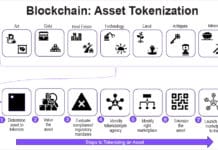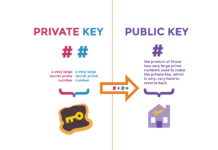Open source DevOps tools offer flexibility and accessibility, along with solid community support. Take a look at some of the best tools in this domain.
DevOps, which fosters collaboration between development and operations, relies heavily on tools to streamline tasks. Open source tools, known for accessibility and flexibility, have become indispensable in this environment, supporting continuous integration, delivery, and monitoring. DevOps engineers leverage these tools for building, testing, deploying, and monitoring applications effectively, contributing to the evolution of modern software development and IT operations. So, let’s take a closer look at some of the best open source DevOps tools.
Continuous integration (CI) tools
Jenkins
Jenkins, an open source automation server, stands at the forefront of continuous integration (CI) tools, facilitating seamless integration and automation in the software development life cycle. Known for its extensibility, Jenkins supports the entire build, test, and deployment process, promoting collaboration and efficiency among development teams.
Key features: Jenkins boasts a rich set of features, including robust plugin architecture, which allows customisation based on project requirements. It supports parallel execution, enabling faster builds, and offers integrations with a myriad of tools and technologies. With support for distributed builds and extensive plugin support, Jenkins adapts to diverse project needs effortlessly.
Versatile integration: It seamlessly supports various version control systems, build tools, and deployment options. Also, it is adaptable to diverse testing frameworks, ensuring a comprehensive CI/CD pipeline.
Community backing: Supported by a robust community, Jenkins receives continuous improvements, ensuring relevance and security. It is a reliable choice for enterprises of all sizes.
Travis CI
Travis CI is a leading continuous integration service, streamlining software development by automating testing and deployment. Its intuitive interface and robust features make it a go-to tool for developers aiming to increase code reliability.
Its main features are:
- Parallel builds
- Customisable environments
- Multi-language support
Travis CI seamlessly integrates with GitHub, automatically triggering builds on code changes for continuous testing. Simultaneously, it fosters a vibrant user community where developers collaborate, share insights, and offer support. This engaged environment serves as a valuable resource for troubleshooting and learning, making it accessible to developers at all skill levels.
Version control tools
Git
Git is important for DevOps; it revolutionises version control by enabling efficient tracking of code changes. Its decentralised structure allows developers to work collaboratively, ensuring code integrity, version management, and seamless collaboration across teams.
Git excels in facilitating collaboration through robust branching strategies. Whether using feature branches or Gitflow, teams can work concurrently on different aspects of a project. This promotes parallel development, reduces conflicts, and increases overall productivity in collaborative DevOps environments.
Apache Subversion (SVN)
Apache Subversion (SVN) stands as a centralised version control system, offering a robust platform for tracking and managing changes in software development projects. Its centralised approach proves beneficial for certain development scenarios, making it particularly suitable for projects with strict access control requirements and those involving extensive binary assets. Known for its reliability and ease of use, SVN has been a cornerstone in version control for many years.
Table 1: Git and Apache Subversion (SVN): A comparison
| Git | Apache Subversion (SVN) | |
| Version control model | Distributed | Centralised |
| Branching and merging | Strong support with flexibility | Supported but less flexible |
| Collaboration | Excellent for distributed teams | Centralised collaboration |
| Performance | Fast, especially for local operations | Efficient for centralised workflows |
| Learning curve | Can be steeper due to distributed nature | Generally considered more straightforward |
| Tagging | Lightweight and flexible | Supported but less flexible |
| Offline work | Full functionality available offline | Limited offline capabilities |
| Binary file handling | Good support | Strong support |
| Popularity and community | Widely used with a large community | Established with a dedicated community |
| Use cases | Versatile, suitable for various projects | Well-suited for projects with centralised needs |
| Ideal for | Distributed development, open source projects | Projects with strict access control, centralised workflows |
Configuration management tools
Ansible
Ansible, a powerful open source automation tool, simplifies configuration management and orchestration of IT infrastructure. Known for its agentless architecture, Ansible allows seamless automation across a wide range of systems.
Configuration management capabilities: Ansible excels in configuration management by enforcing consistency and automating repetitive tasks. Its declarative language ensures a desired state configuration, making it easy to manage and scale infrastructure.
Automation use cases: From provisioning servers to configuring network devices, Ansible streamlines various automation use cases. It integrates with cloud services, facilitating dynamic infrastructure management, and supports continuous deployment pipelines in DevOps workflows.
Community and modules: The vibrant Ansible community contributes to an extensive library of modules, enabling users to automate diverse tasks. These modules, coupled with Ansible’s adaptability, empower users to configure and manage systems efficiently.
Chef
Chef, a popular configuration management tool, embraces Infrastructure as Code (IaC) principles.
Infrastructure as Code (IaC): Chef leverages the IaC approach, enabling users to codify infrastructure configurations. This ensures that infrastructure changes are version-controlled, providing a clear audit trail and facilitating collaboration among development and operations teams.
Chef cookbooks and recipes: Chef organises configuration tasks into cookbooks and recipes. Cookbooks contain the necessary configurations, while recipes define the steps to achieve a particular configuration. This modular approach improves reusability and simplifies complex infrastructure management.
Adoption in DevOps workflows: Chef seamlessly integrates into DevOps workflows, supporting continuous integration and delivery. Its ability to automate configuration tasks, combined with version-controlled IaC, contributes to faster and more reliable application deployment, a key aspect of modern DevOps practices.
Table 2: Prometheus and ELK Stack: A comparison
| Prometheus | ELK Stack | |
| Monitoring type | Metric-based monitoring | Log-based monitoring |
| Data collection | Pull-based | Logstash (Push) or beats |
| Storage | Local storage, retention policy | Elasticsearch |
| Query language | PromQL | Elasticsearch Query DSL |
| Alerting | Built-in alerting rules | Watcher for alerting in Elasticsearch |
| Visualisation | Grafana | Kibana |
| Log processing | Limited capabilities | Extensive log processing with Logstash |
| Scalability | Highly scalable | Scalable, may require config for large setups |
| Integration | Limited | Wide range of plugins for various sources |
| Ease of set up | Relatively straightforward | Requires more components and configuration |
| Community support | Strong | Medium community support |
| Use case focus | Metric monitoring, alerting | Log analysis, visualisation, monitoring |
| Ease of querying | PromQL is specific but powerful | Elasticsearch Query DSL can be complex |
Containerisation and orchestration tools
Docker
Docker, a pioneering containerisation tool, is revolutionising application deployment and scalability.
Containerisation fundamentals: Docker encapsulates applications and their dependencies in lightweight containers, ensuring consistency across diverse environments.
Docker Compose: Simplifying multi-container applications, Docker Compose orchestrates their configuration, linking, and execution, facilitating seamless deployment.
Integration with CI/CD: Docker integrates seamlessly with continuous integration/continuous deployment (CI/CD) pipelines, ensuring efficient testing and delivery of applications.
Docker Hub and community images: Leveraging Docker Hub, developers access a vast repository of pre-built containers, fostering collaboration and accelerating the development process.
Kubernetes
Kubernetes, an industry-standard container orchestration tool, offers a robust framework for managing containerised applications.
Container orchestration basics: Kubernetes automates the deployment, scaling, and management of containerised applications, providing fault tolerance and optimising resource utilisation.
Kubernetes features: Rich features such as automatic load balancing, rolling updates, and self-healing capabilities empower developers to build resilient, scalable applications.
DevOps applications in Kubernetes: Kubernetes plays a pivotal role in DevOps, facilitating collaboration between development and operations teams, streamlining workflows, and enhancing overall efficiency.
Community and ecosystem: A thriving open source community surrounds Kubernetes, contributing to its vibrant ecosystem. This community-driven approach ensures continuous improvement and adaptation to evolving industry needs.
Monitoring and logging tools
Prometheus
Prometheus is an open source monitoring toolkit with a focus on metrics-based monitoring. It employs a pull-based model to collect metrics, features a powerful query language (PromQL), and supports built-in alerting. It seamlessly integrates with visualisation tools like Grafana.
ELK Stack (Elasticsearch, Logstash, Kibana)
The ELK Stack is a set of open source tools for log management and data visualiation. Elasticsearch is a distributed search and analytics engine, Logstash facilitates log processing, and Kibana provides a user-friendly interface for real-time analytics and visualisation. Used extensively in DevOps, the ELK Stack offers centralised log management with strong community support.
Collaboration and communication tools
Mattermost
Mattermost is a versatile collaboration and communication tool with a user-friendly interface that facilitates seamless team communication and coordination.
Its integration capabilities are a highlight, as Mattermost easily syncs with a myriad of other tools, enhancing workflow efficiency. This ensures that teams can consolidate their work processes, bringing various applications under one roof for streamlined operations.
Encryption and compliance features make Mattermost a secure choice for organisations, especially those dealing with sensitive information.
The tool’s commitment to community ensures that Mattermost stays relevant and responsive to the evolving user needs.
Zulip
Zulip excels as a group chat and threading tool, promoting organised and focused team discussions. Its unique threading system keeps conversations neatly compartmentalised, reducing clutter and making discussions easier to follow.
Zulip’s seamless integration with DevOps tools streamlines communication within the development life cycle, enhancing collaboration, and accelerating project timelines.
Its commitment to open source community engagement encourages collaboration, feedback, and continuous improvement.
Tailored specifically for DevOps teams, Zulip introduces unique features that cater to the distinct needs of this domain, making it a strategic choice for DevOps operations.
Choose wisely! When selecting DevOps tools, factor in integration ease, scalability, and community support. Keep an eye on the learning curve and adaptability to project needs. A strategic toolchain aligns with your goals and propels your projects forward.













































































